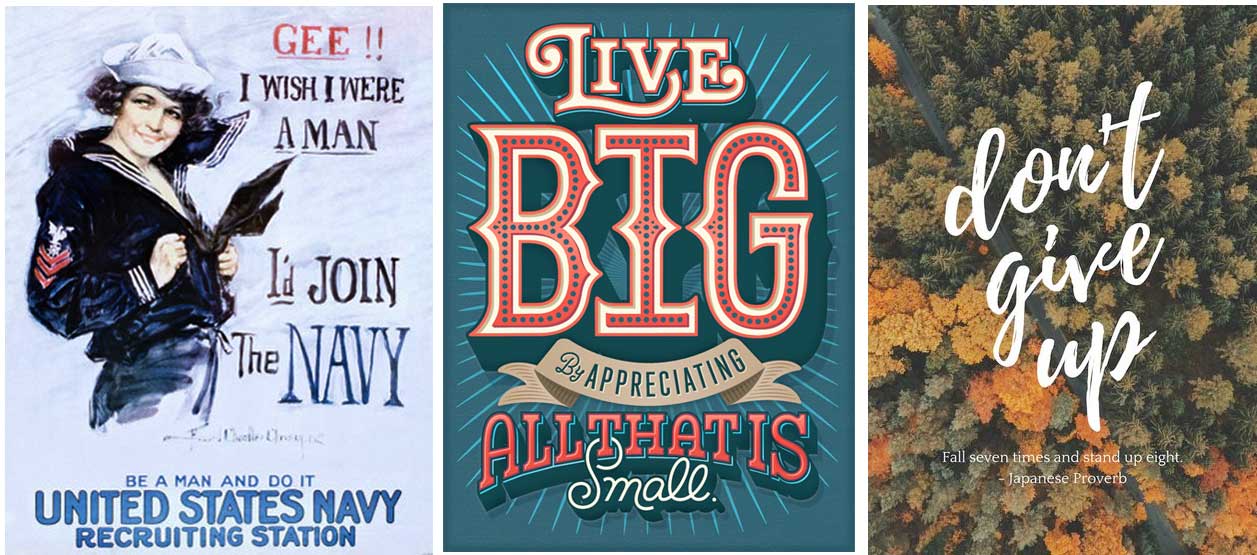After reviewing the Alex White book on publishing, I had a reader ask questions all about captions in presenting information on the web or social media.
> I would like help on textbook captions > 1) Who does the captioning of photos, > charts, maps, tables, side bars, > marginal notes, etc? > Is it the author or the editor?
All of the above…
Generally the author will write the captions based on art or photos supplied with the article or essay. However the editor will have a turn at wordsmithing and refining the text supplied by the author. (Did you ever meet an editor who didn’t have something to say about everything in the piece??) Then, the designer takes a stab at it, and in many cases will voice an opinion too. (I’ve never met a caption I couldn’t edit!)
> Are there certain principles or guidelines > to follow in designing textbook captions?
Yes, indeed! Important info
- captions should always be short. (If you can’t read them in a single breath, they’re too long.) Never write more than a single sentance. (Never caps either!)
- captions should always say something about the visual object that relates directly to the ‘story’ yet NOT give away the full jist of the text.
Provide just enough information to ‘push’ your reader into the next level of involvement!
Alex White, in “Type In Use” says:
“We like explanations. Even as children we ask for explanations of things we see around us. Captions are a printed response to that curiosity.”
He goes on to say
Three rules for developing captions:
- Captions explain photos
- Captions lure readers
- Captions add personality.
Of course you should read the whole chapter 5 “Captions” in Alex’s book. Very inspiring.
> Do students really read these captions or they just ignore them by > sticking mainly to the main text of the book. Unless, perhaps, an > interesting photo called their attention, they won't stop > reading the main text. And this is the only time they read the > caption accompanying it.
HA!!!
As I’ve preached many times in my Design & Publishing workshops… captions are your friend. In many, many situations, captions are the most important elements on the page. Remember the single most important rule of layout and design:
Where do the readers’ eyes fall?
1st, on the darkest (or most contrast) area of the page.
Even before recognition, the reader is drawn into the primary visual object on the page — most often a photo, illustration of large piece of typography.
If the visual hook is a photo or illustration, where do the readers’ eyes fall NEXT?
…of course, to the caption! (If there is one.)
Readers are heavily influenced by “eye-flow gravity” … if the eye falls on a photo or illustration it has the natural tendency to ‘fall’. If there’s a caption below the image, that’s the next thing they’ll visually become involved with. If there isn’t a caption below the image, they’ll become involved with the next closest thing to that image.
Okay… see how you can influence your reader? See how you can make them read what YOU want them to read?
These two books have been my mentors, and anyone who uses type, fonts, layout and writing to publish their ideas should read:
- Alex White : TYPE IN USE
- LISTENING TO TYPE Making Language Visible
Thanks for the great question! And, thanks for reading …

Editor/Publisher : 60-Seconds.com, — Published online since 1988 — +FredShowker on Google+ or most social medias #showker or #fredshowker and our Facebook Discussion Group


 Sylvester Jalnaiz from Canva wrote in and asked me to replace one of my pages links with his. Sort of rude, but he’s an outreach officer for a site that has exploited the amateur graphic design market. But then when attempting to get access to the site, it asked me to sign in using GOOGLE. OH NO!!! Big RED flag! Never, ever sign in to a web site using any other web site ID/Password! Bad, bad karma!
Sylvester Jalnaiz from Canva wrote in and asked me to replace one of my pages links with his. Sort of rude, but he’s an outreach officer for a site that has exploited the amateur graphic design market. But then when attempting to get access to the site, it asked me to sign in using GOOGLE. OH NO!!! Big RED flag! Never, ever sign in to a web site using any other web site ID/Password! Bad, bad karma!  Fred Showker explores design, graphics, computing, social media, marketing, and the online world with an eye to entertaining, amazing information that will possibly make you think!
Fred Showker explores design, graphics, computing, social media, marketing, and the online world with an eye to entertaining, amazing information that will possibly make you think!